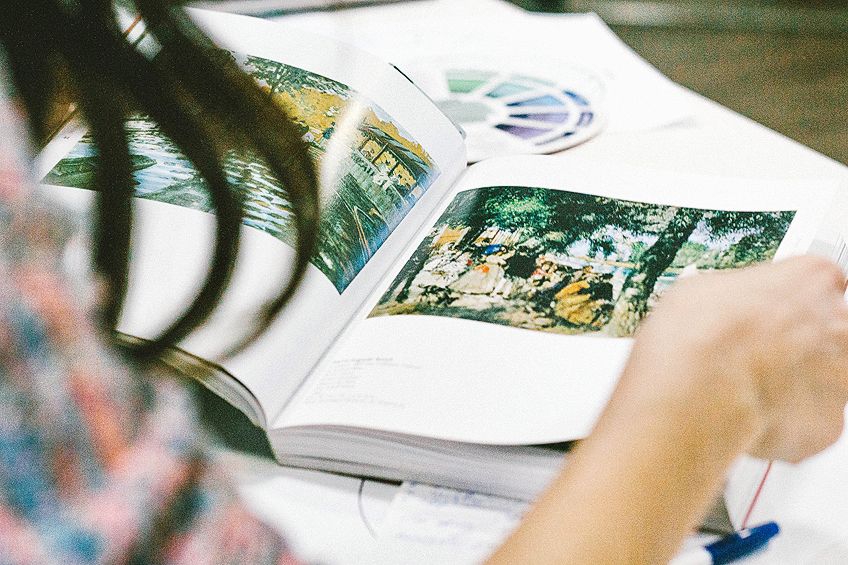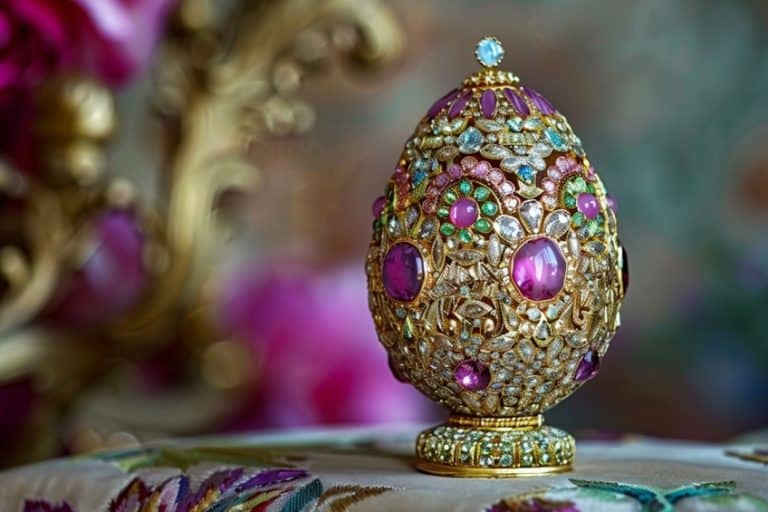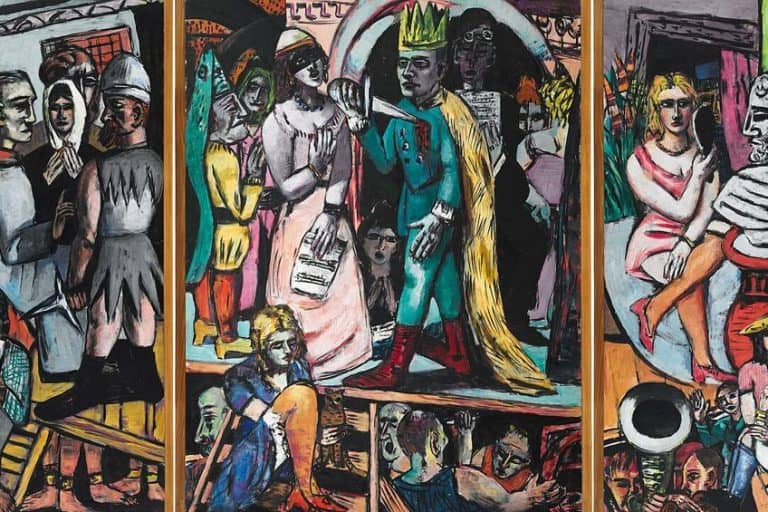Best Art History Books – Our Recommended Reading List
Art history is a broad topic embracing almost all aspects of human history and society. The sheer variety of art historical approaches to the study of visual expression, can make choosing an art history book to meet your specific needs or interests quite bewildering. We have compiled a list of books that represent art history in its multiple facets to guide you. Read on to discover how to find the best art history books for you from the vast variety available.
What Is the Best Art History Book for Me?
The term art history applies to a very large field of inquiry. Books about art history range from broad brush chronologies that cover thousands of years of artistic development, to focused analyses of specific art periods, artists, or artworks. There are art historians who examine the lives, work, and influences of artists. There are some who specialize in art materials and techniques. There are historians of art who explore the ideas that underpin art movements and artworks. And even others, who study how artworks have been interpreted and understood by audiences in different times and places.
Some art historians even specialize in writing books about famous art historians. And then there are those who aim to turn everything we think we know about the history of art on its head.
Most art history books include multiple illustrations in color, making them more expensive than average. So, before you buy, make sure that the content of the book meets your specific needs
Are You an Art Student?
If you are an art student, then you are going to need a good selection of books. It is always useful to have at least one good general chronology: a book that provides an encyclopedic oversight of art periods over large historical timeframes. In addition, you will need books that give insight into how artworks are interpreted. You will require books on the theories underpinning the production and historical significance of artworks. If you aim to specialize in a practical field – such as artist, art restorer, and so on, then you especially will need books on the development of art materials and techniques.
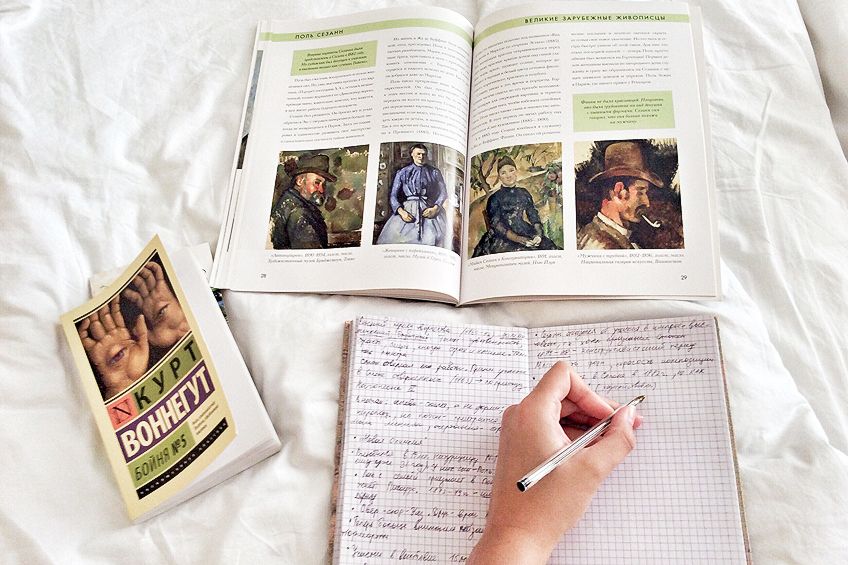
Do not be seduced by beautiful pictures. You are not buying a coffee table book. Students need books by reputable authors who are acknowledged experts in their fields.
Are You in an Art-Adjacent Field?
Designers, architects, and professional craftspeople may need books on art history for visual reference purposes or for identifying period-specific stylistic traits. Avoid books which cover too lengthy a timeframe, as they have a limited number of illustrations per period. Instead look for books that focus on specific historical periods with an abundance of good quality images printed on hardwearing paper.
As these books will function as reference materials and be in continuous use, buy the best quality book with the best quality illustrations you can afford.
Are You an Art Enthusiast?
Whether you enjoy touring galleries and art museums, or building your own art collection, odds are, you also like to get your art fix in book form. You do not want an art history textbook. There is instead an excellent selection of books on art and artists available for non-academic readers. These offer a combination of relevant information and interesting anecdotes by authors who are as enthusiastic about art as you are. Some of these books are lavishly illustrated, others have excellent written content.
Follow your interests and look for books about specific artists, styles or periods that fascinate you. Read a sample page before you buy to ensure that you enjoy the author’s writing style.
Are You an Art Practitioner?
If you are an artist, then odds are, you have built up quite a collection of art history books during your training: books on techniques, materials, artists, art periods, theory, and more. What type of art history book will benefit you now that you are a professional? The best books for artists are those that challenge or re-examine conventional art historical ideas.
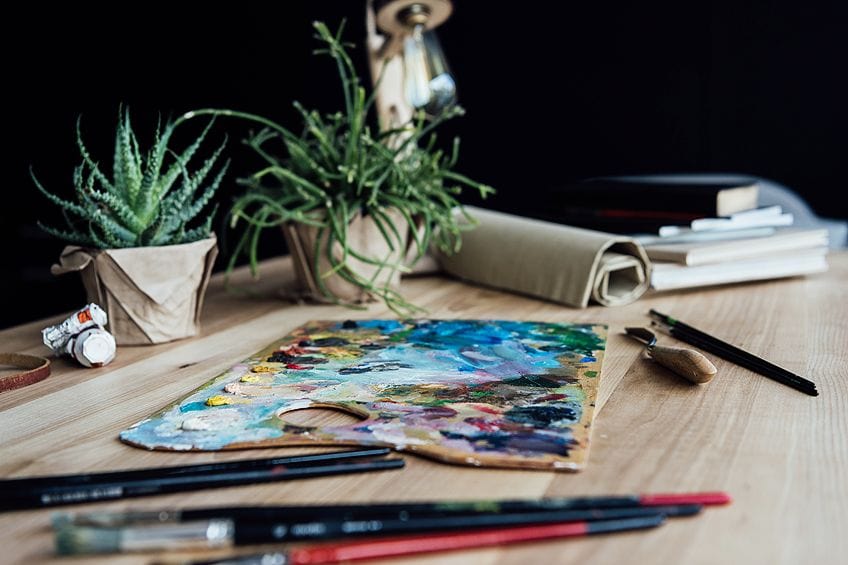
Remember, art history is not a static but a dynamic field. Keeping abreast of new perspectives on how art has historically been made and interpreted will keep your own artistic practice equally dynamic.
Are You a Complete Beginner?
If you know nothing about art and would like to know more, we can help. Start with a book aimed at art enthusiasts that offers an overview of art periods. Choose one that is not too broad in its scope. Once you have a general idea of stylistic differences, find books by similar authors that describe how specific artworks are interpreted. This will provide a foundation on which you can build a fuller appreciation of art history.
You need a historical overview, because not only do the styles, techniques and materials that artists use to make art vary across time-periods, audiences and reasons for making art differ too. You also need to know what art historians consider and look for when interpreting artworks.
10 Best Art History Books
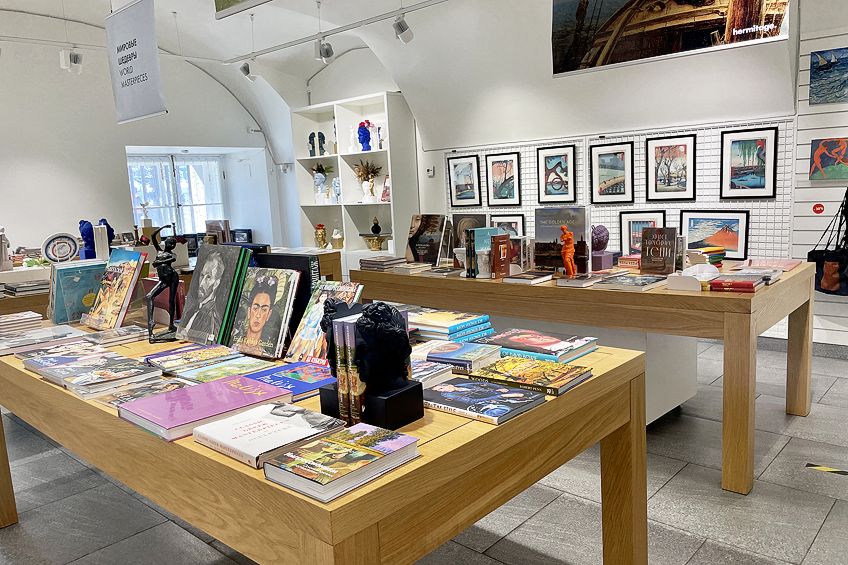
What Great Paintings Say. 100 Masterpieces in Detail by Rainer and Rose-Marie Hagen (2020)
| Author(s) | Rainer Hagen and Rose-Marie Hagen |
| Publisher | TASCHEN |
| Number of Pages | 762 |
| Dimensions | 13.78 x 2.28 x 10.31 inches |
| Who Is It For? | Artists, art students, art enthusiasts, and beginners |
This book demonstrates how art historians decode artworks. The authors analyze and explain the use of symbolism and the expressive potential of visual elements used by artists when creating artwork. They do so in a thoroughly engaging and easily understandable way. Each of the artworks discussed is beautifully illustrated with multiple images of enlarged detail sections. This is amongst the most informative set of descriptions of a selection of artworks available in book form. Once you’ve read this book, you will never look at a painting the same way again. A must for everyone from art students to absolute beginners.
- A first-hand look at decoding paintings
- Treasure-trove of facts and anecdotes
- A rare close-up view of artworks
PROS
- Fascinating
- Informative
- Enjoyable
CONS
- Narrow focus (by necessity)
Gardner’s Art through the Ages: A Global History by Fred S. Kleiner (2021)
| Author(s) | Fred S. Kleiner |
| Publisher | Wadsworth Publishing and Cengage Learning |
| Number of Pages | 1264 |
| Dimensions | 9.1 x 2.2 x 11.7 inches |
| Who Is It For? | Art students |
The 16th edition of this canonical book builds on everything that has made it an indispensable art history textbook for generations. In keeping with Helen Gardner’s 1926 original, this book is organized in chronological terms but with an even more expansive geographical scope. The book’s encyclopedic quality makes it an ideal reference tool. It enables a clear understanding of art periods and styles within their immediate and broader contexts, and the inclusion of art from across the globe enables the reader to trace cross-cultural contacts and influences. This is an ideal candidate for that one broad-in-scope art history text that every student needs.
- Excellent new edition
- One of the best and most comprehensive chronologies
- Broad geographical scope
PROS
- Accessible
- Comprehensive in scope
- Quality content and illustrations
CONS
- Generalized (by necessity)
The Story of Art by Ernst Gombrich (1995)
| Author(s) | Sir Ernst Gombrich |
| Publisher | Phaidon Press |
| Number of Pages | 688 |
| Dimensions | 6.9 x 1.4 x 9.7 inches |
| Who Is It For? | Art students, enthusiasts, and beginners |
An update of a seminal book by one of the world’s most famous art historians. This redesigned version boasts a new format, and improved illustrations and index. The Story of Art provides an erudite and well researched introduction to the history of art in an easy and welcoming tone. It is a comprehensive chronological narrative comparable to Gardner’s Art through the Ages. Gombrich’s aim was less to write a textbook than to speak directly to the non-academic newcomer to art. The book does so very successfully without any hint of condescension. It is a much-loved classic for a reason and a very good introduction to art history for any reader.
- All readers will appreciate the simplicity and clarity of Gombrich's writing
- Completely redesigned with colorful illustrations and six fold-outs
- Both a pleasure to read and a pleasure to handle
PROS
- Infectuous enthusiasm
- Easy to read
- Conversational tone
- Enjoyable
CONS
- Generalized (by necessity)
Techniques of the Great Masters of Art by Waldemar Januszczak (1996)
| Author(s) | Waldemar Januszczak |
| Publisher | Chartwell Books, Inc |
| Number of Pages | 540 |
| Dimensions | 9.25 x 1.75 x 12 inches |
| Who Is It For? | Artists, art students and art practitioners such as restorers and conservators |
The development of the techniques and materials used in making art is an often-overlooked topic that is nonetheless central to the history of art. This book was created with the assistance of art conservators and historians who specialize in artistic technique. The result is a wonderfully informative book that vividly demonstrates what went into the production of each artwork discussed. The illustrations are particularly impressive, with detail sections that are the actual size as in the artwork. A very comprehensive glossary of techniques and materials is also included.
- Excellent technical information
- Ideal for art specialists
- Detailed and comprehensive illustration of subjects
PROS
- Expert insight into techniques and materials
- Comprehensive glossary of materials and techniques
- Good resource for artists and art restorers
CONS
- Highly specialized
Sister Wendy’s 100 Best-loved Paintings by Sister Wendy Beckett (2019)
| Author(s) | Wendy Beckett |
| Publisher | SPCK Publishing |
| Number of Pages | 232 |
| Dimensions | 9.25 x 0.75 x 10.75 inches |
| Who Is It For? | Art enthusiasts and beginners |
Like Kenneth Clark and John Berger before her, Sister Wendy Beckett (yes, she’s a nun) made her name hosting television documentaries on art. Sister Wendy is the ultimate art museum tour guide. An ability that translates seamlessly from televised to written format. Like all her books, this one is accessible, beautifully executed, and overflowing with her love for art. This is a perfect combination of coffee table book and introduction to art for the beginner and enthusiast alike.
- Excellent coffee table book
- Broad appeal
- Exudes enthusiasm for art
PROS
- Beautifully illustrated
- Easy to understand
- Ideal gift book
CONS
- INot for specialists
Classical Art: From Greece to Rome by Mary Beard and John Henderson (2001)
| Author(s) | Mary Beard and John Henderson |
| Publisher | Oxford University Press |
| Number of Pages | 304 |
| Dimensions | 9.34 x 6.62 x 0.73 inches |
| Who Is It For? | Art enthusiasts, art students, art and archaeological professionals |
For academic insight into specific art periods, The Oxford History of Art series combines expertly written texts by prominent art historians with quality full-color illustrations. Each book explores how the period under discussion can be seen though a new lens. One example from this series is Classical Art: From Greece to Rome. Beard and Henderson provide a fresh perspective on Classical Art with expert analysis and in-depth discussion of the development and subsequent influence of Classical art. Ideal for students and period specialists, while the excellent illustrations provide valuable visual reference material. This series of books covers just about every art historical period you can think of.
- A rediscovery of Classical art within the modern world
- A critique of Greek art through a Roman perspective
- Both authors teach Classics at the University of Cambridge
PROS
- Expert overview of the topic
- Well-illustrated
- New perspectives
CONS
- Not for the general reader
Mona Lisa: The History of the World’s Most Famous Painting by Donald Sassoon (2016)
| Author(s) | Donald Sassoon |
| Publisher | HarperCollins |
| Number of Pages | 368 |
| Dimensions | 0.9 x 5 x 7.7 inches |
| Who Is It For? | Artists, art students, enthusiasts, and some beginners |
Artworks have lifespans that extend far beyond those of their makers. Art history is not only concerned with the study of artworks within their original contexts, but also how subsequent viewers’ responses to an artwork can change and develop over time. Mona Lisa is an exploration of how one rather small painting has managed to charm and mystify for nearly half a millennium. In describing the history of Da Vinci’s masterpiece in exacting detail, Sassoon reveals not just the story of one painting, but also the ideas and expectations that determine how people view, interpret, and appreciate artworks.
- Fascinating
- Enjoyable read
- Focused
PROS
- An informatively entertaining read
- Very well researched
- Good quality illustrations
CONS
- Not for the casual reader
A View of Delft: Vermeer Then and Now by Anthony Bailey (2001)
| Author(s) | Anthony Bailey |
| Publisher | Henry Holt and Co |
| Number of Pages | 256 |
| Dimensions | 5.74 x 1.09 x 8.72 inches |
| Who Is It For? | Artists, art students, enthusiasts, and beginners |
This book may not meet your immediate expectations of books about art history. It looks and reads more like a novel, but it is an excellent example of art history as an in-depth inquiry into what makes an artist. Bailey has produced a deeply nuanced and intimate portrait of Johannes Vermeer and his artistic legacy, demonstrating how Vermeer’s environment – the city of Delft – shaped both the man and his work. The writing style is fluid and the subject-matter compelling. An excellent example of an artist’s biography.
- Artist's biography
- Provides very good contextual insight
- More text than images
PROS
- Very well written
- Very well researched
- Very good read
CONS
- Limited illustrations
A History of Pictures: From the Cave to the Computer Screen by D. Hockney & M. Gayford (2016)
| Author(s) | David Hockney and Martin Gayford |
| Publisher | Abrams |
| Number of Pages | 360 |
| Dimensions | 8.5 x 1.5 x 11 inches |
| Who Is It For? | Artists, art students, and enthusiasts |
Just in case anyone thought art history might be dull, David Hockney and Martin Gayford produced this book where they engage in a lively conversation about how humans produce pictures. Everything from cave art to stills from youtube videos are discussed from the perspective of an artist (Hockney) and a critic (Gayford). The dialogue format of the book reminds that art history is not the recording of dates and listing of styles, but a continuous conversation incorporating experts, practitioners, and enthusiast alike to understand how and why artists make art.
- Takes the form of a dialogue
- Unusual approach
- Thought-provoking
PROS
- Fun
- Fascinating
- Very well illustrated
CONS
- Not for traditionalists
Art, Second Edition: A Visual History by Robert Cumming (2020)
| Author(s) | Robert Cumming |
| Publisher | Dorling Kindersley (DK) |
| Number of Pages | 416 |
| Dimensions | 8.13 x 1.57 x 9.81 inches |
| Who Is It For? | Art students, art enthusiasts, beginners, and art-adjacent practitioners |
Cumming’s aim in producing a visual history of art is to encourage his reader to begin their understanding of art by first looking at it intensively, and then reading about it. As a result, this book is richly illustrated with works from artists ranging from the very famous to the more obscure. This book covers a wide chronological scope of the major art movements, styles, themes, and techniques, and includes a useful glossary of terms. Which makes it useful reference book as well. It combines elements of What Great Paintings Say with Techniques of the Great Masters of Art delivered with the informed enthusiasm of Gombrich and Beckett.
- Good chronological survey
- Beautifully illustrated
- Broad appeal
PROS
- Pleasure to read
- Visual feast
- Provides a good overview
CONS
- Generalized (by necessity)
Choosing the Best Art History Books
We hope you have found our small sample of books about art history informative. Our intention was to demonstrate the large variety of art historical approaches out there and the diversity of books available on the subject. Once you get to areas of specialization, such painting, sculpture, drawing, printmaking, photography, video art, installation, and so on, options for available books expand even more. The range of approaches, as illustrated above, will still apply.
Every author directs their book towards an imagined audience. Sometimes that audience is small and specialized, at other times it is expansive. If you can identify a book’s intended audience and you have a good idea of which area of art history covers your interests, then whether you are an artist, enthusiast, beginner, or you work in a related field, you should be able to find an art history book that meets your needs.
Isabella studied at the University of Cape Town in South Africa and graduated with a Bachelor of Arts majoring in English Literature & Language and Psychology. Throughout her undergraduate years, she took Art History as an additional subject and absolutely loved it. Building on from her art history knowledge that began in high school, art has always been a particular area of fascination for her. From learning about artworks previously unknown to her, or sharpening her existing understanding of specific works, the ability to continue learning within this interesting sphere excites her greatly.
Her focal points of interest in art history encompass profiling specific artists and art movements, as it is these areas where she is able to really dig deep into the rich narrative of the art world. Additionally, she particularly enjoys exploring the different artistic styles of the 20th century, as well as the important impact that female artists have had on the development of art history.
Learn more about Isabella Meyer and the Art in Context Team.
Cite this Article
Isabella, Meyer, “Best Art History Books – Our Recommended Reading List.” Art in Context. August 11, 2021. URL: https://artincontext.org/best-art-history-books/
Meyer, I. (2021, 11 August). Best Art History Books – Our Recommended Reading List. Art in Context. https://artincontext.org/best-art-history-books/
Meyer, Isabella. “Best Art History Books – Our Recommended Reading List.” Art in Context, August 11, 2021. https://artincontext.org/best-art-history-books/.


